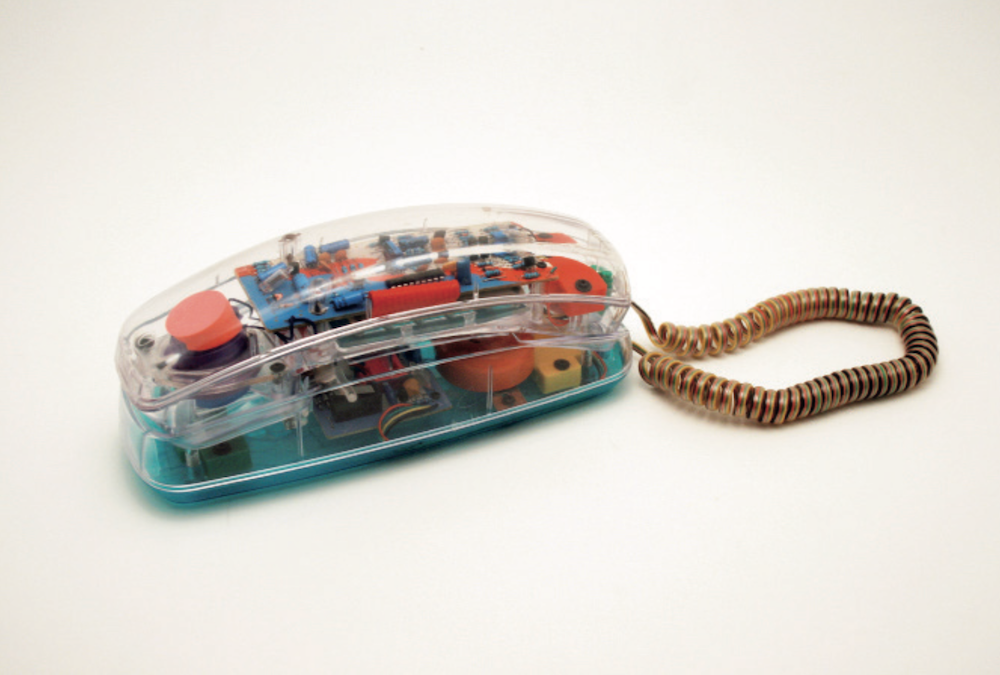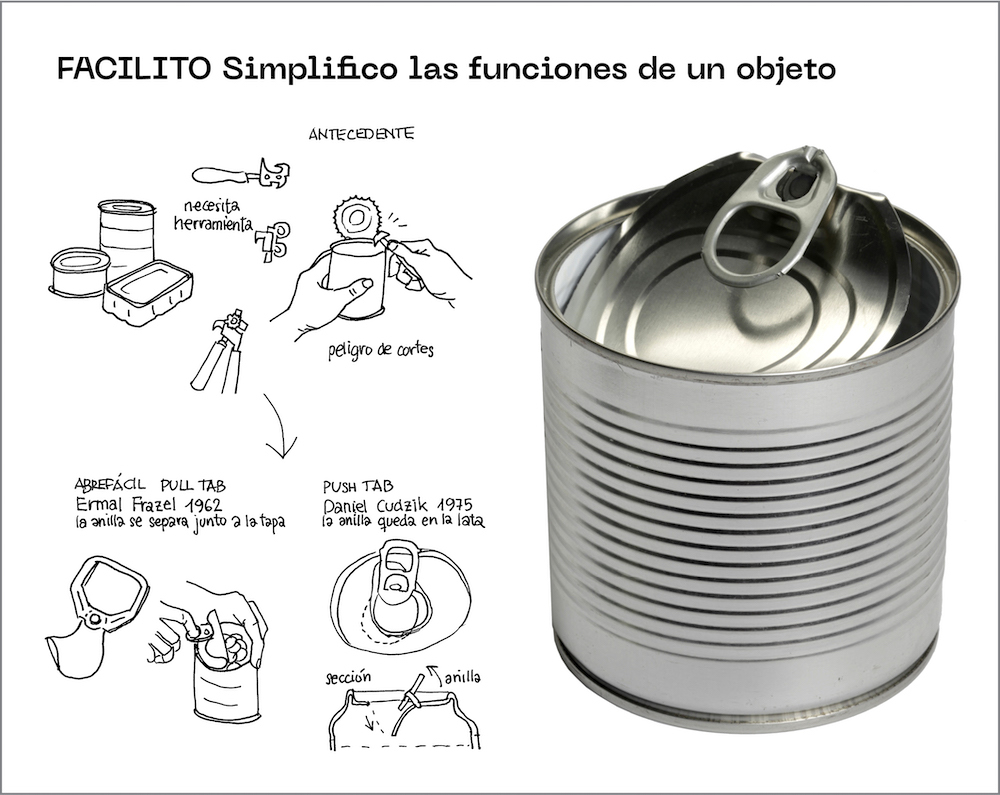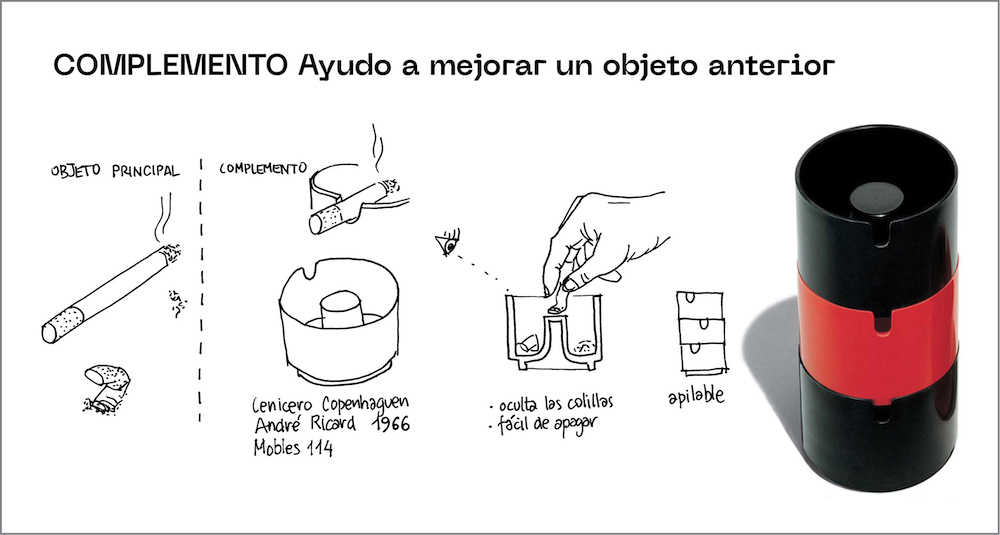I work because I am like that!
ho
The architect, former president of the FAD, curates this exhibition in the frame of Madrid Design Festival 2020.

Why are objects the way they are? We started talking about industrial design about 100 years ago and the discipline has radically transformed our day to day and our environment. The architect and design curator Juli Capella, who was president of the FAD between 2001 and 2005, explores it with the exhibition «I work because I am like that!» in the framework of the 3rd Madrid Design Festival.
The exhibition presents a selection of one hundred products that have helped improve our lives from 1950 until today, and highlights its virtues accompanied by drawings made by Capella himself and opinions of several renowned designers. The pieces come from the private collection of the gallerist Moisés Pérez de Albéniz and Capella has grouped them around ten strategies related to their conception:
To reduce costs: Objects whose main purpose is to reduce the price compared to other products with similar benefits, such as the disposable lighter, clips, plastic watches or pocketbooks.
To innovate: A section with products that, from a different perspective, seek to improve their use, such as a flexible measuring tape, headband headphones or a wireless mouse.
To supplement: The key aspect of these objects is that they supplement other existing products, such as the toilet brush, a corkscrew, a cardboard eggs box, a staple remover or a hanger with tweezers.
To accelerate: Objects that help us maximize our time, such as disposable cutlery, the Polaroid camera or the arm mixer.
To multifunction: Products conceptualized with several uses in the same object, such as the multipurpose knife, the IPhone, the fork spoon or the cane with a folding seat.
To reduce: Compacted shirts, folding maps or umbrellas and radios that reduce the size or volume of objects and make their use or transport more comfortable and lighter.
To facilitate: The shoehorn, the easy-opening can, the funnel or the Post-it notes came into our lives to simplify the functions of the objects and make our lives easier.
To add: Objects designed to add a new use to existing ones, such as the pencil with rubber, the chopsticks, the multicoloured pen or the serving spoon with a spaghetti meter.
To stylize: Because simple aesthetics is a value on itself, in this section we will find designs that “rethink” previous models to give them a more attractive appearance. Juicers, letter openers or perfume bottles with a different signature style by the author.
To surprise: A final section in which objects seek to surprise beyond their function, for their hidden use or appearance, such as a pen-shaped scent, a transparent telephone, wooden cutlery or anti-stress gadgets.
With «I work because I am like that!» Capella gives entity to the objects: “Everything around us is designed, be it more consciously or unconsciously. That is why we can say that objects are like creatures that, with their forms, tell us how they are and explain to us why they were born that way.”
We have spoken with Juli Capella and asked him to highlight three products from among the hundred that make up the exhibition, which includes works by prestigious designers such as Dieter Rams, Philippe Starck, Achille Castiglioni, Alessandro Mendini, Ettore Sottsass, André Ricard, Rafael Marquina, Daniel Gil, Tibor Kalman, or Matteo Thun, among others. The selection reveals our daily relationship with design, a relationship that we often oversee, as we will see below:

Easy Opener: a design that “facilitates” the functions
It is a small but great object that seems insignificant, but if it is not incorporated, we have a problem with a can and we need another object, a can opener. Thanks to its ingenuity, we save a tool, time and also avoid possible accidents. A breakthrough of the 60s, reminiscent in its humility to objects such as the clip, which was the mascot of the Year of Design for the centenary of the FAD in 2003.

Ashtray: a design that “complements” another object, the cigarette
Without cigarettes, ashtrays would never have been designed. There are many types of ashtrays, but few are as perfect as The Copenhagen. The ash is not visible, it does not blow away when transporting it. In its inner cylinder, the cigarette butt goes unnoticed and it doesn’t stain the fingers, with the sunken side the cigarette does not roll or fall, it is stackable… A perfect design by André Ricard, a prominent member of ADI-FAD and pioneer of Spanish design.

Spoon for spaghetti: an object with an extra “added” function
It is very difficult to collect the spaghetti from the pot, this spoon is suitable for leaning on their teeth and it is easy to pass them on to the plate. But in addition, the hole that has to drain the water is sized to measure the amount of a ration of spaghetti, approximately 75 to 100 grams, without the necessity to weight them. Sometimes it is possible to add some new functionality to a pre-existing object.
If you want to discover with new eyes why the objects that surround us are like they are, make sure to visit the exhibition at the Fernán Gómez Cultural Center of the Villa in Madrid until March 1st, 2020. The exhibition also takes to the streets, in the Plaza de Felipe II, thanks to the collaboration with JCDecaux that transfers inspiring messages to the public about the role of design as a transforming element of our environment and landscape contemporary material.